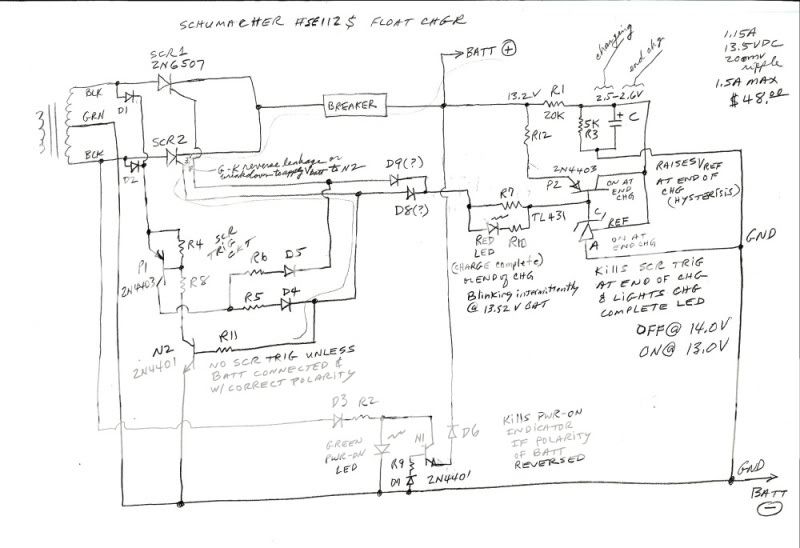I'm curious about other's experiences with 1-2 amp, on-board battery maintainers.
I ask, because I do not believe some of the "reviews" I've read.
Last year, I started getting a little fed up with batteries going dead in newer cars that don't get driven much. Many newer cars will kill a battery in 4-6 weeks if not started. First, I put battery disconnects on a few. Then I got in trouble with New York MV inspection. They fail you if your battery has been unhooked "recently." I had to drive my Dodge Grand Caravan 200 miles before it would pass. My daughter's 2002 Ford Focus did the same.
I've also got a dozen tractors sitting around with batteries in them.
So, about a year ago, Harbor Freight started selling 1.5 amp, on-board, three-stage maintainers for $11 each. For that price, I figured I'd try a few. I now have 10 of them without a single failure.
Now, their price is up to $20 each and I've been wanting a few more.
Here's my problem with reviews.
NAPA ran a sale on Black & Decker/Vector 2 amp maintainers. Model VEC080. On sale for $22 each. So, I bought two. Absolute pieces of junk. One didn't work new out of the box, and NAPA gave me a new replacement. Within two months - both died. I got my money back - but will never, ever - use anything with the Black & Decker/Vector name again. I had a similar go-around with their 4000 watt inverters. Chinese junk with no product support - with an American brand-name.
Now I want a few more. HF wants $20 plus shipping.
Schumacher sells the exact same unit as HF and charges $24 for it.
I'm wondering if there are any other brands, in a similar price range, that have held up well for people.
My ONLY complaint with the HF units is - if they turn "on" in full 1.5 amp charge mode, they knock out any AM radio reception within 100 feet.
A minor issue.
HF unit is exactly the same as the Shumacher model SE-1-12S for anybody that cares. Both from China but very good quality.
I ask, because I do not believe some of the "reviews" I've read.
Last year, I started getting a little fed up with batteries going dead in newer cars that don't get driven much. Many newer cars will kill a battery in 4-6 weeks if not started. First, I put battery disconnects on a few. Then I got in trouble with New York MV inspection. They fail you if your battery has been unhooked "recently." I had to drive my Dodge Grand Caravan 200 miles before it would pass. My daughter's 2002 Ford Focus did the same.
I've also got a dozen tractors sitting around with batteries in them.
So, about a year ago, Harbor Freight started selling 1.5 amp, on-board, three-stage maintainers for $11 each. For that price, I figured I'd try a few. I now have 10 of them without a single failure.
Now, their price is up to $20 each and I've been wanting a few more.
Here's my problem with reviews.
NAPA ran a sale on Black & Decker/Vector 2 amp maintainers. Model VEC080. On sale for $22 each. So, I bought two. Absolute pieces of junk. One didn't work new out of the box, and NAPA gave me a new replacement. Within two months - both died. I got my money back - but will never, ever - use anything with the Black & Decker/Vector name again. I had a similar go-around with their 4000 watt inverters. Chinese junk with no product support - with an American brand-name.
Now I want a few more. HF wants $20 plus shipping.
Schumacher sells the exact same unit as HF and charges $24 for it.
I'm wondering if there are any other brands, in a similar price range, that have held up well for people.
My ONLY complaint with the HF units is - if they turn "on" in full 1.5 amp charge mode, they knock out any AM radio reception within 100 feet.
A minor issue.
HF unit is exactly the same as the Shumacher model SE-1-12S for anybody that cares. Both from China but very good quality.


